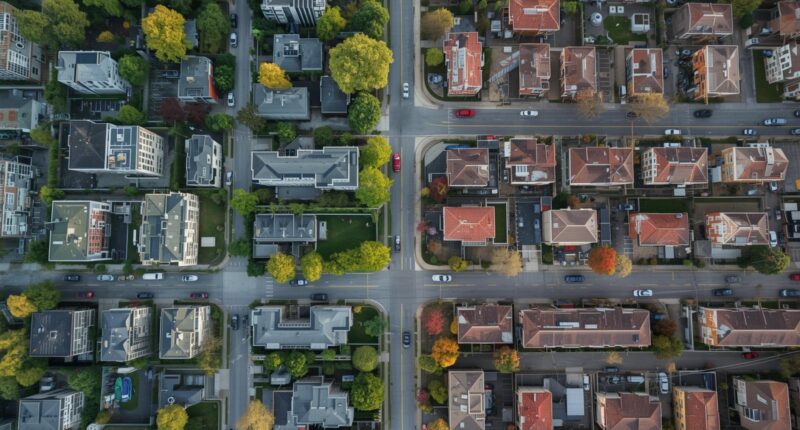Urban vs. Suburban Living: Which Suits Your Lifestyle?
When choosing where to live, one of the biggest decisions you’ll face is whether urban or suburban living fits your lifestyle best. Each environment offers its own unique advantages — from the excitement and convenience of the city to the peace and space of the suburbs.
As housing markets evolve in 2025, understanding the differences between urban vs. suburban living is crucial for making the right choice for your comfort, budget, and long-term goals.
In this guide, we’ll compare both lifestyles across key factors such as cost, commute, safety, and quality of life — helping you find out which truly suits your lifestyle.
Understanding Urban Living
Urban living refers to residing in densely populated city areas filled with skyscrapers, business hubs, restaurants, and entertainment centers. It’s fast-paced, vibrant, and often more expensive — but for many, the convenience and energy make it worth it.
Key Features of Urban Living
-
Close proximity to workplaces, schools, and hospitals.
-
Wide range of cultural, dining, and entertainment options.
-
Access to public transportation and shorter commute times.
-
Smaller living spaces but higher rent or property costs.
Urban living appeals to professionals, students, and people who thrive in dynamic environments.
(📌 Related Link: How to Choose a Home That Fits Your Lifestyle)
Understanding Suburban Living
Suburban living is about space, peace, and community. Suburbs are typically located on the outskirts of major cities, offering larger homes, quieter streets, and more privacy.
Key Features of Suburban Living
-
Larger properties with yards and garages.
-
Lower population density and quieter neighborhoods.
-
Family-friendly communities with local schools and parks.
-
Longer commutes but more affordable real estate prices.
Suburban areas are ideal for families, retirees, or anyone seeking a slower pace of life while maintaining access to city conveniences.
Table: Comparing Urban vs. Suburban Living
| Category | Urban Living | Suburban Living |
|---|---|---|
| Lifestyle Pace | Fast, dynamic, and diverse | Relaxed, calm, and community-oriented |
| Housing Costs | Higher rents or purchase prices | More affordable per square foot |
| Space and Privacy | Limited space, small apartments | Larger homes, more privacy |
| Commute Time | Shorter (public transport access) | Longer (dependence on cars) |
| Entertainment Options | Wide variety (restaurants, nightlife, events) | Family-oriented activities, local gatherings |
| Environment | More pollution and noise | Cleaner air, more greenery |
| Ideal For | Professionals, singles, students | Families, retirees, remote workers |
Pros and Cons of Urban Living
✅ Advantages of Urban Life
-
Closer to job opportunities and business centers.
-
Better access to healthcare, shopping, and education.
-
Active social scene with cultural diversity.
-
Efficient public transportation system.
❌ Disadvantages of Urban Life
-
Higher cost of living and rent.
-
Limited parking and smaller living spaces.
-
Higher stress levels due to noise and crowding.
-
Less access to nature and outdoor recreation.
Pros and Cons of Suburban Living
✅ Advantages of Suburban Life
-
Larger, more affordable homes.
-
Peaceful environment with less noise and pollution.
-
Strong sense of community and safety.
-
Better for raising children and family activities.
❌ Disadvantages of Suburban Life
-
Longer commutes to work or entertainment areas.
-
Limited nightlife and fewer shopping options.
-
Dependence on personal vehicles.
-
Slower-paced lifestyle (may feel dull to some).
Cost Comparison Between Urban and Suburban Areas
The cost of living plays a major role in determining which lifestyle suits you best.
| Expense Category | Urban (City) | Suburban (Outside City) | Notes |
|---|---|---|---|
| Housing (Monthly) | $2,000 – $3,500 | $1,200 – $2,000 | Larger homes in suburbs at lower prices |
| Utilities | $150 – $250 | $200 – $300 | Larger suburban homes consume more energy |
| Transportation | $100 – $250 | $300 – $500 | Public transport cheaper in cities |
| Groceries | $400 – $600 | $350 – $550 | Slightly cheaper in suburban areas |
| Entertainment | $200 – $400 | $100 – $200 | Cities offer more paid entertainment options |
How to Decide Which Lifestyle Fits You
Choosing between urban and suburban living depends on your personal priorities, financial goals, and daily habits.
Ask yourself these questions:
-
Do I value convenience or space more?
-
Is my job located in the city or can I work remotely?
-
Do I prefer a lively environment or peace and privacy?
-
What’s my budget for housing and transportation?
-
Am I raising a family or focusing on my career?
Trend in 2025: Blended Lifestyles
Interestingly, the line between urban and suburban living is beginning to blur. Many developers are creating “urban suburbs” — areas that combine suburban peace with urban convenience.
Examples of Urban-Suburban Hybrids
-
Walkable suburban downtowns with cafes and co-working spaces.
-
Mixed-use developments offering retail and residential integration.
-
Transit-oriented communities with fast access to city centers.
➡️ Tip: Explore lifestyle trends shaping property development at Forbes Real Estate Council.
Environmental and Lifestyle Impact
-
Urban areas contribute to higher carbon emissions but encourage compact, efficient living.
-
Suburban areas support greener lifestyles with open spaces and gardens but rely more on vehicles.
The key is balance — finding a location that minimizes your environmental impact while matching your lifestyle goals.
Final Thoughts
Choosing between urban vs. suburban living is about finding where you truly feel at home. Urban life offers excitement, accessibility, and opportunities, while suburban life provides peace, comfort, and room to grow.
In 2025, many people are embracing a hybrid approach — working in cities but living in nearby suburbs to enjoy the best of both worlds.
Ultimately, the right choice depends on your lifestyle, priorities, and financial comfort. Whether you crave the city’s energy or the suburbs’ serenity, the perfect place is where your lifestyle feels balanced and fulfilling.









